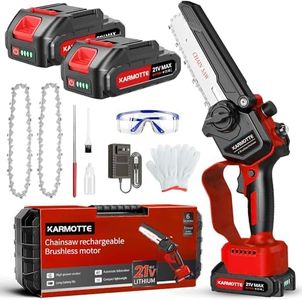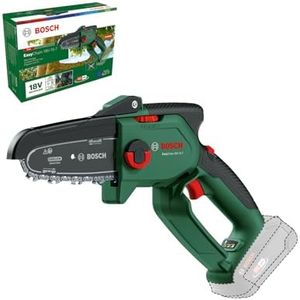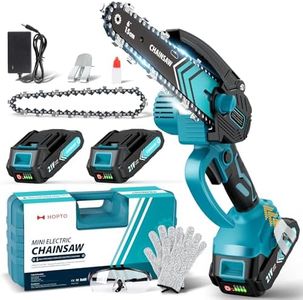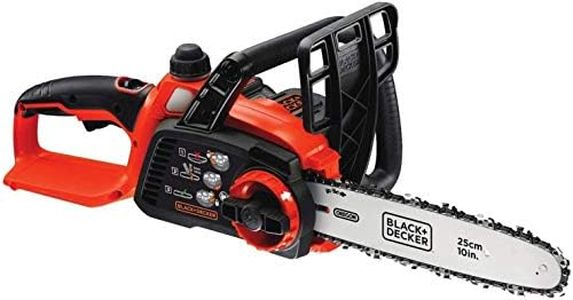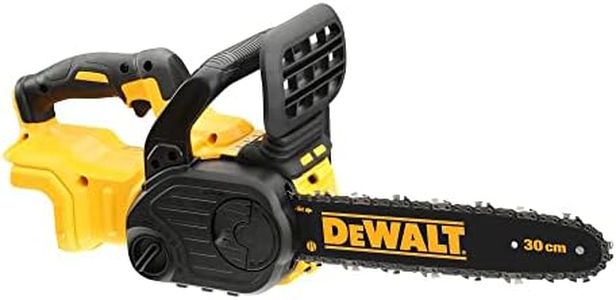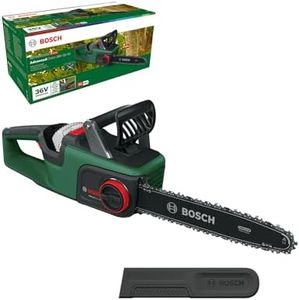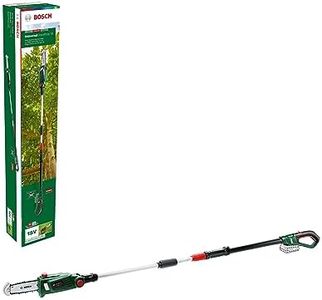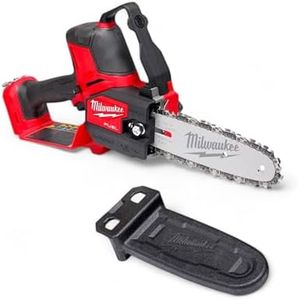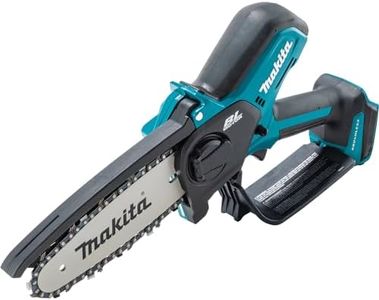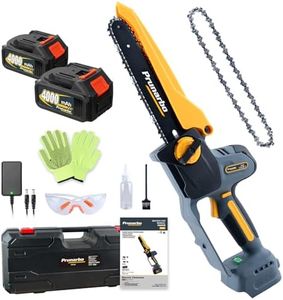We Use CookiesWe use cookies to enhance the security, performance,
functionality and for analytical and promotional activities. By continuing to browse this site you
are agreeing to our privacy policy
10 Best Battery Powered Chainsaws
From leading brands and best sellers available on the web.Buying Guide for the Best Battery Powered Chainsaws
Choosing a battery-powered chainsaw is all about balancing power, convenience, and safety for your specific use. Battery-powered chainsaws are great for people who want to avoid the noise, fumes, and maintenance of gas models, or the cord limitations of electric ones. Think about what tasks you need it for, like pruning small branches, cutting firewood, or tackling larger trees, and match the chainsaw's capabilities to those needs. Consider your physical comfort, such as how heavy the saw feels in your hands and whether you need to use it for extended periods. Safety features, ease of maintenance, and compatibility with other battery-powered tools you own can also influence your choice.Battery Voltage (V)Battery voltage measures the potential power available to the chainsaw; higher voltage generally means more cutting power and efficiency. Chainsaws typically come in low (18-24V), medium (36-40V), or high (56V and up) segments. Lighter jobs like trimming and pruning are fine with lower voltages, while medium is suitable for most yard work, and the highest voltages are needed for demanding tasks like cutting thick wood. Pick a voltage that matches your typical task, aiming higher for challenging work and lower for portability and lighter tasks.
Battery Capacity (Ah)Battery capacity, measured in amp-hours (Ah), determines how long your chainsaw will run on a single charge. Lower capacities (2-3Ah) are lighter and more suited to quick jobs; midrange capacities (4-5Ah) balance weight and runtime for typical home use, while higher capacities (6Ah or more) are best for extended cutting without recharging. If you plan to work for long sessions or don’t want frequent interruptions, choose a chainsaw with a higher capacity battery.
Bar LengthThe bar length refers to the length of the cutting blade and dictates the maximum diameter of wood the chainsaw can cut in a single pass. Short bars (10-12 inches) are ideal for pruning and small tasks; medium bars (14-16 inches) suit general yard work and moderate branches, while long bars (18 inches or more) are meant for larger trees and thick logs. Select a bar length that's slightly larger than the biggest wood you expect to cut but not so large that the saw becomes unwieldy for you.
WeightWeight determines how easy the chainsaw is to handle, especially over long periods. Lightweight models (under 7 pounds) are easier to maneuver and reduce fatigue, which is ideal for casual users or longer jobs. Heavier models (8-12 pounds) often offer more power but require more strength and control. Consider your physical ability and how long you plan to use the chainsaw at a stretch when deciding what weight is comfortable for you.
Safety FeaturesCommon safety features include chain brakes, low-kickback bars, hand guards, and trigger locks. These features reduce the risk of accidents, especially for beginners or those working in awkward positions. Look for saws with automatic chain brakes and reliable guards if you’re new to chainsaws, or if you'll be cutting above shoulder height or in close quarters.
Tool-Free Chain TensioningThis feature lets you adjust the chain’s tightness without using tools, making it faster and easier to maintain proper operation. Quick adjustments keep the saw safe and efficient, especially for beginners or those who want less hassle. If you don’t have much experience or want more convenience, pick a model that offers tool-free adjustments.
Battery System CompatibilitySome chainsaws use batteries that are compatible with other tools from the same brand, allowing you to share batteries among different devices. If you already own battery-powered tools, choosing a chainsaw that uses the same battery system can save money and storage space. Assess your current power tool collection and consider compatibility to make your battery investment more versatile.
